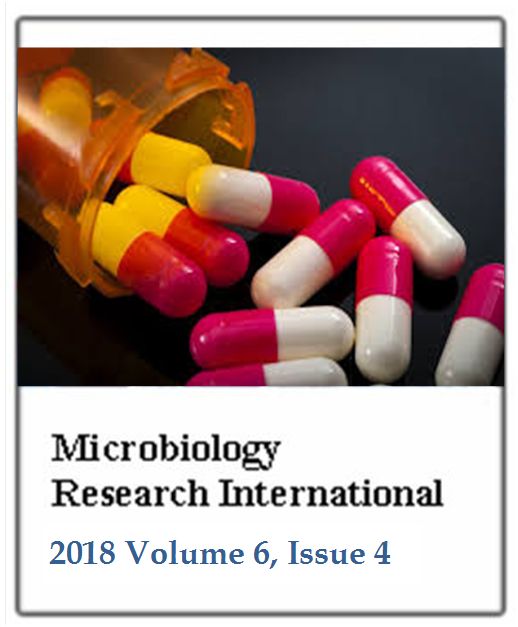Efficacy of ELISA test in diagnosis of Mycobacterium tuberculosis infection
Alma Yolanda Arce-Mendoza, Adrián Geovanni Rosas-Taraco, Mara Pamela Cantú-Treviño, Alberto Yairh Limón-Flores, Martha Maricela Solís-Treviño, Elba Guadalupe Rodríguez-Pérez, Luis Edgar Rodríguez-Tovar and Rafael González-ÁlvarezMicrobiology Research International
Published: November 14 2018
Volume 6, Issue 4
Pages 54-60
DOI: https://doi.org/10.30918/MRI.64.18.022
Abstract
Tuberculosis (TB) is a worldwide public health problem; early diagnosis is the key to prescribe an opportune treatment. Most of TB cases are diagnosed at advanced stages, being important to detect carriers TB cases to avoid its transmission. Three study groups were done. Group 1 (contacts): 77 healthy subjects in contact with sick TB individuals. Group 2 (active TB): 28 patients in course of active TB. Group 3 (healthy): 46 subjects without TB. For each group, anti-Mycobacterium tuberculosis (Mtb) IgM and IgG quantification was performed by ELISA, as well as, PPD test. Group 1 gave positive results as follow: 93, 40.25 and 71.4% for IgM, IgG and PPD, respectively. Group 2 had positive results as follow: 96.4, 46.42 and 100% for IgM, IgG and PPD, respectively. Group 3 got positive results as follow: 4.34, 56.52 and 43% for IgM, IgG and PPD, respectively. The IgM/IgG ratio was higher in group 1 and lower in group 3. In conclusion, this serologic test is efficient to detect anti-Mycobacterium tuberculosis IgM antibodies in healthy subjects who had been in contact with sick TB individuals. This means the opportunity to detect the presence of a latent infection in apparently healthy individuals. It is an advantage over PPD due to it only evaluates the activation of the Th1 lymphocytes in healthy individual which was been previously gotten in contact with Mycobacterium tuberculosis and not present disease, thus PPD is not an adequate test to indicate latent infection.
Keywords: Indirect ELISA, skin test, tuberculosis, Mycobacterium tuberculosis.
Full Text PDF
